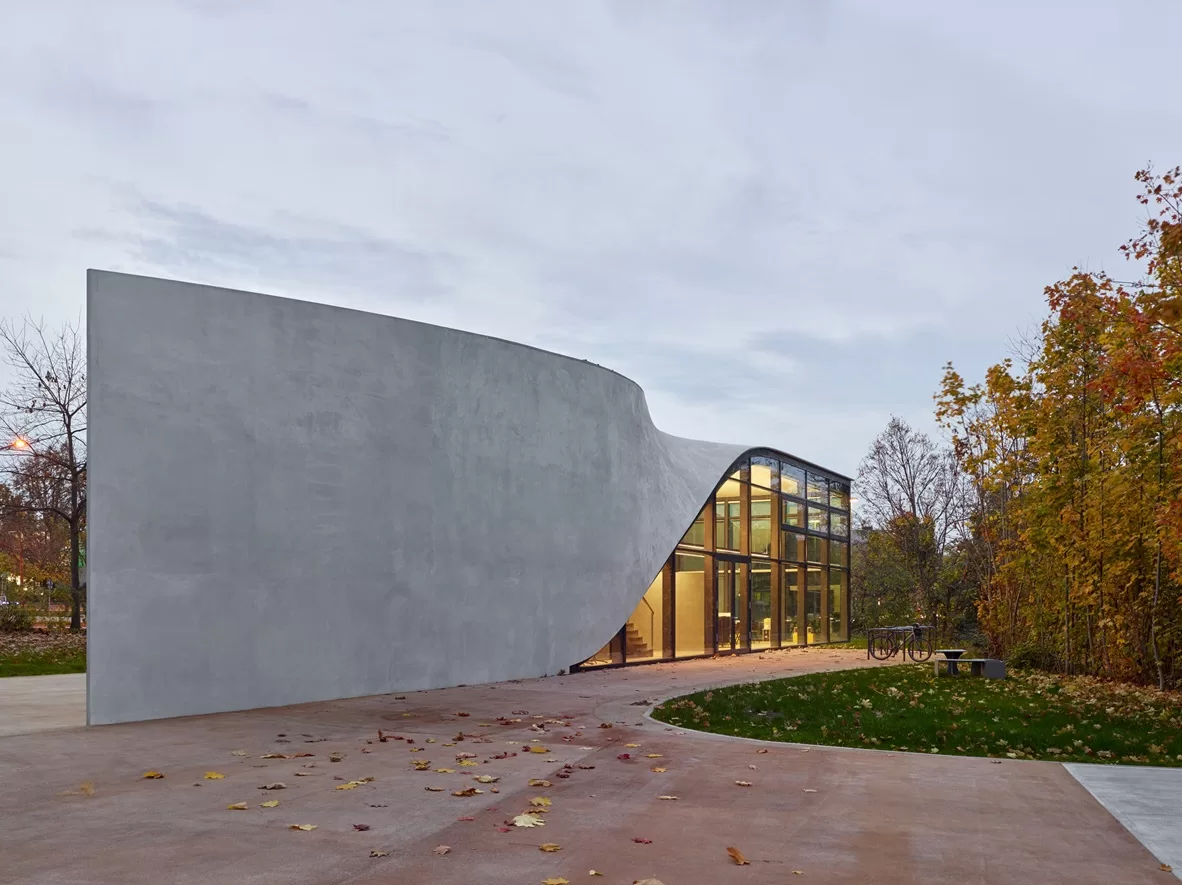German architecture firm Henn, in collaboration with the Technical University of Dresden, has achieved a groundbreaking milestone in construction – the completion of the world’s first building made of carbon concrete, known as “The Cube.” This innovative material utilizes carbon fiber instead of traditional steel reinforcement, opening up new possibilities in construction and sustainability.
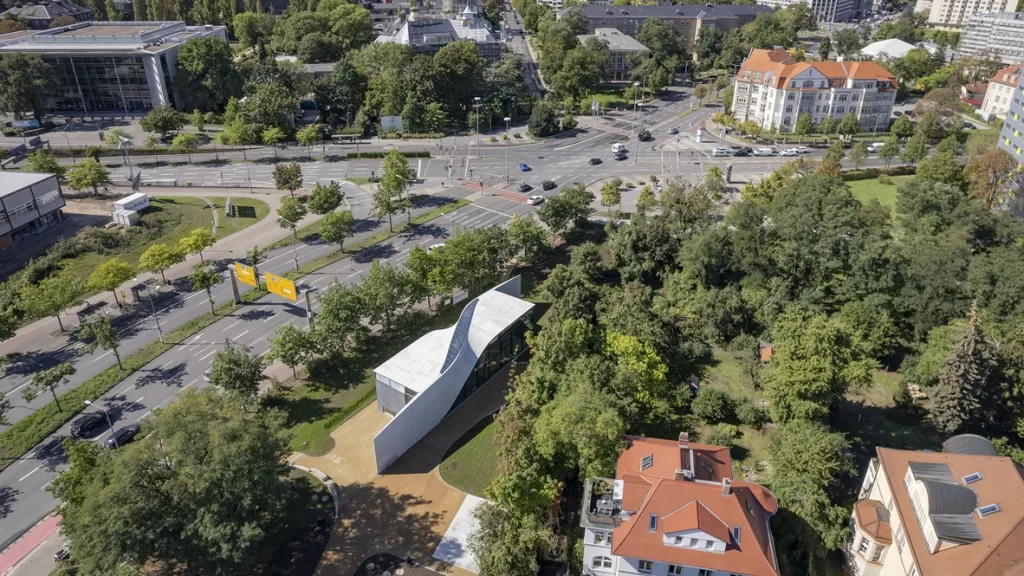
The Cube, a 243-square-meter building, serves as both a testbed for this cutting-edge material and a versatile laboratory and event space on the TU Dresden campus. Its defining feature is a sinuous, twisting facade that not only visually alludes to the textile quality of carbon fiber but is also structurally enabled by the material’s superior strength and reduced weight compared to conventional concrete.
Henn describes The Cube’s design as an integration of the wall and ceiling, blurring the lines between traditional building components and creating a harmonious, organic continuum. This vision for the future marries environmental responsibility with newfound design freedom.
Giovanni Betti, head of sustainability at Henn, highlights that the slender profile of The Cube’s facade was made possible by the corrosion-resistant nature of carbon fiber. He explains that “Carbon fibre is four times lighter and six times stronger than steel and is not subject to corrosion. This means that the reinforcement does not have to be encapsulated in as much concrete to protect it from water, allowing for thinner components and structures, resulting in material savings of 50 percent or more.”
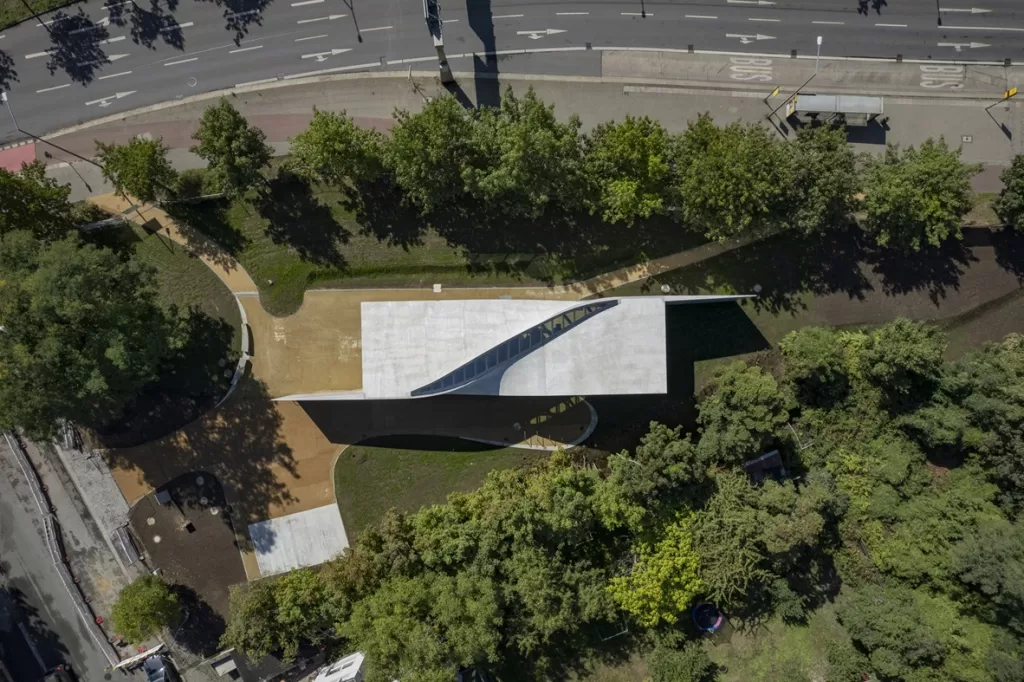
This not only reduces CO2 emissions but also conserves valuable resources such as water and sand, addressing the global sand shortage issue. The building’s design is complemented by extensive glazing on all sides and a skylight that mirrors the twisting form of The Cube while framing the lush garden views.
Carbon fiber’s unique conductivity is harnessed in the design, with the concrete walls featuring insulation pads, heating elements, and interactive touch surfaces. Running a light current through the carbon fiber can generate heat, offering innovative possibilities for energy efficiency and structural monitoring.
The Cube’s construction employed two methods of fabrication: the twisting facade was crafted using shotcrete sprayed onto carbon fiber sheets, while the smaller dark gray box was constructed from prefabricated concrete panels containing layers of carbon sheets.
This pioneering project, announced in 2021, was developed under the Carbon Concrete Composite (CCC) research program, a government-funded initiative that represents a significant advancement in German construction. Despite carbon fiber’s relatively high initial carbon footprint, studies have shown that carbon concrete significantly reduces the global warming potential compared to traditional construction materials.
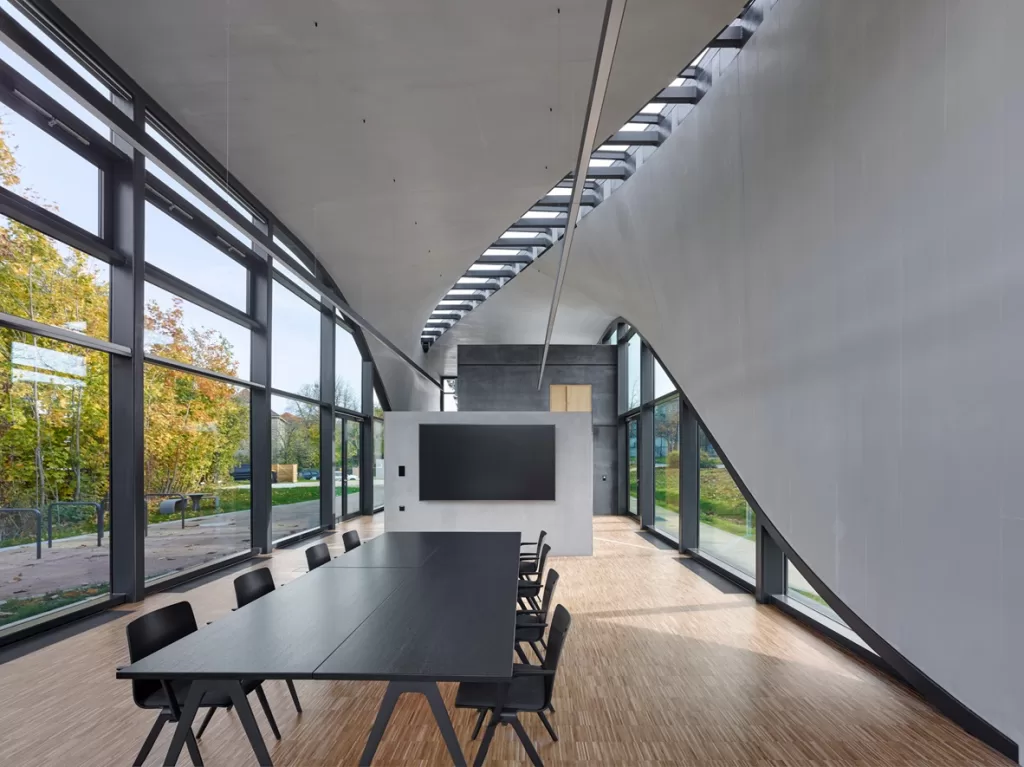
Furthermore, the rust-proof nature of carbon fiber promises an extended lifespan for carbon concrete structures, further reducing their long-term carbon cost. Researchers are also exploring the potential of recycling and bio-based carbon fibers, adding even more sustainability to the equation.
In contrast, the second article highlights the inauguration of The Cube on the Dresden University of Technology (TU Dresden) campus, marking the world’s first building constructed with carbon-reinforced concrete. This revolutionary material substitutes carbon fiber for traditional steel reinforcement, resulting in a structure that is stronger, lighter, and capable of more imaginative forms.
The Cube comprises two distinct volumes, “The Box” and “The Twist,” each demonstrating the material’s versatility. While The Twist was manufactured onsite using shotcrete and formwork, The Box was prefabricated, showcasing the wide range of applications for carbon-reinforced concrete.
One of the primary advantages of this innovative material is that it eliminates the need for a thick concrete cover to protect the steel from corrosion. Professor Manfred Curbach, the director of the Institute for Concrete Structures at TU Dresden, emphasizes that carbon concrete allows for significantly thinner walls and filigree forms, resulting in a 50 percent material savings. This translates to a substantial decrease in CO2 emissions, up to 70 percent.
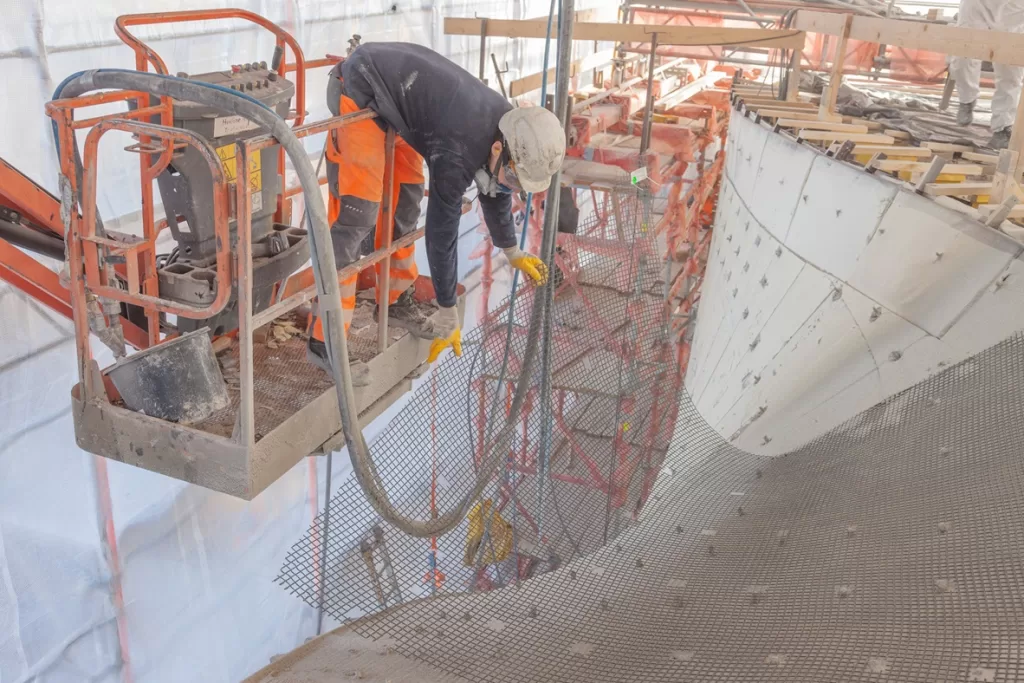
Moreover, carbon concrete offers a remarkable lifespan of over 200 years, compared to the 40 to 80 years of conventional reinforced concrete structures. Its electrical conductivity opens up new possibilities for intelligent networking within buildings, enabling functions such as insulation, heating, and structural monitoring.
The Cube’s success has already inspired the construction industry in Germany, with plans for a school gymnasium in Dresden and a seven-story residential building in Leipzig to be constructed using carbon-reinforced concrete. Engineers and architects are also exploring its potential for restoration projects and improved seismic performance, particularly in earthquake-prone regions. With Germany using approximately 70 million cubic meters of reinforced concrete annually, the adoption of carbon concrete as a strong and lightweight construction material is expected to grow rapidly, transitioning from experimental to mainstream in the near future.
Source: metropolismag.com, dezeen.com


